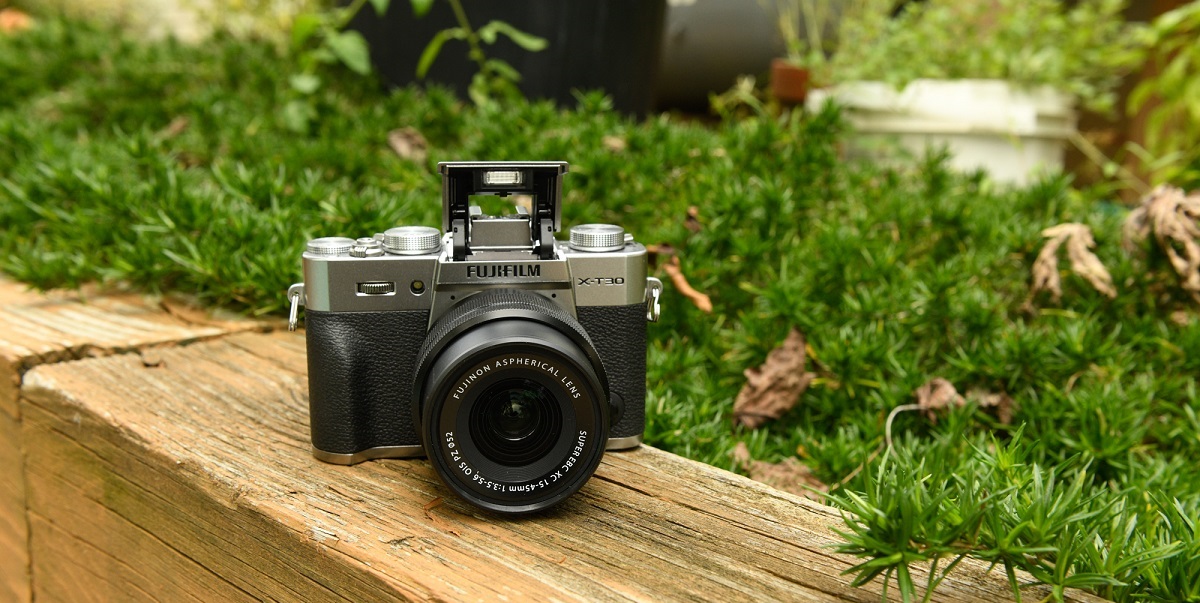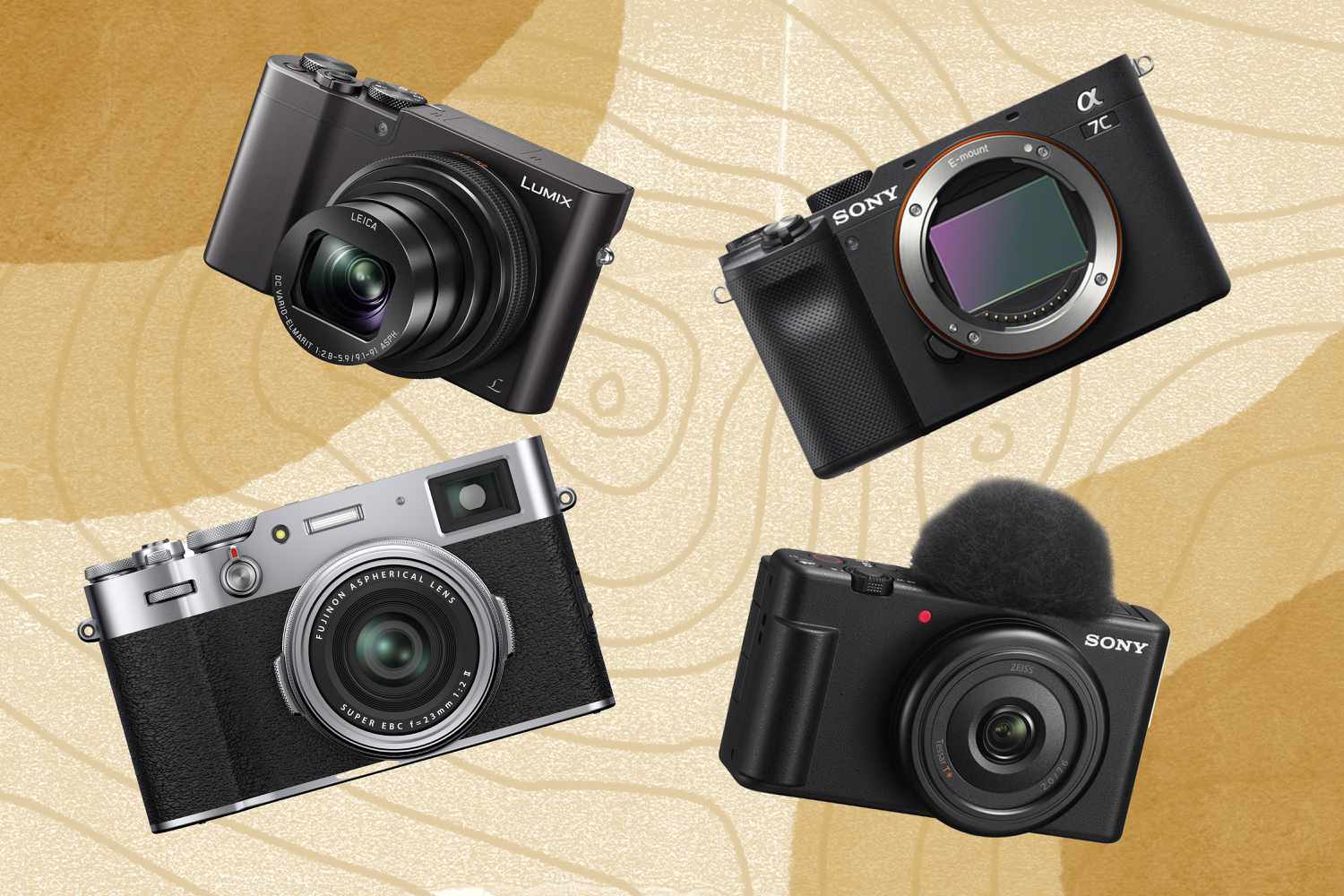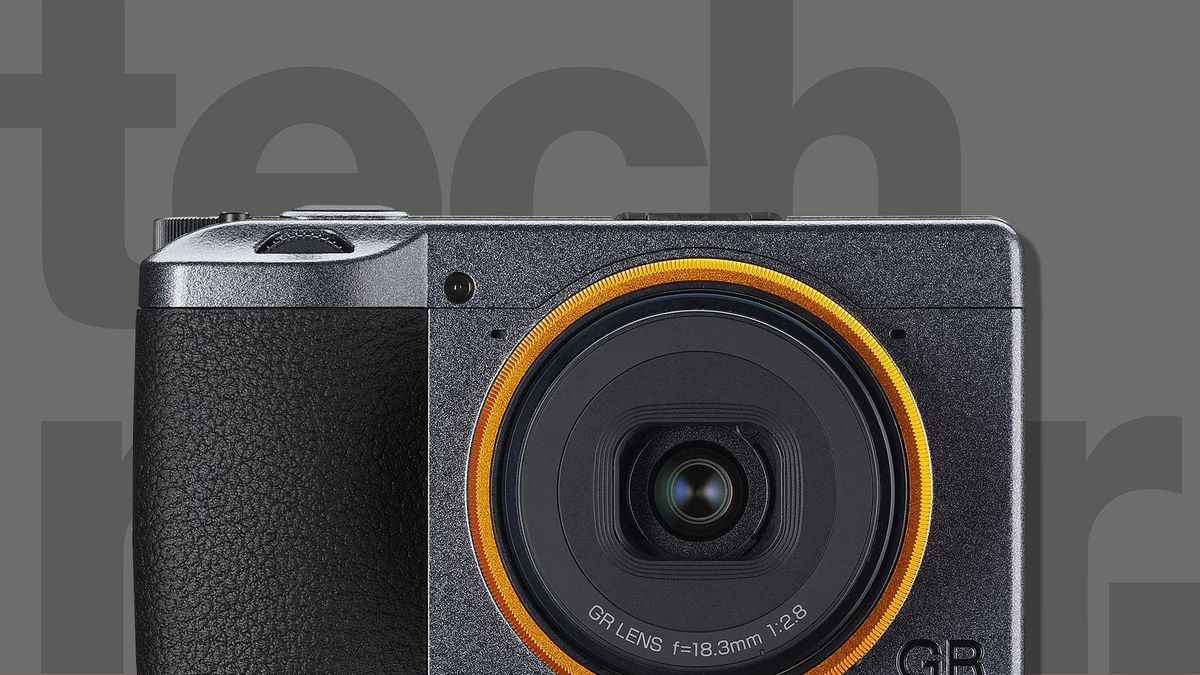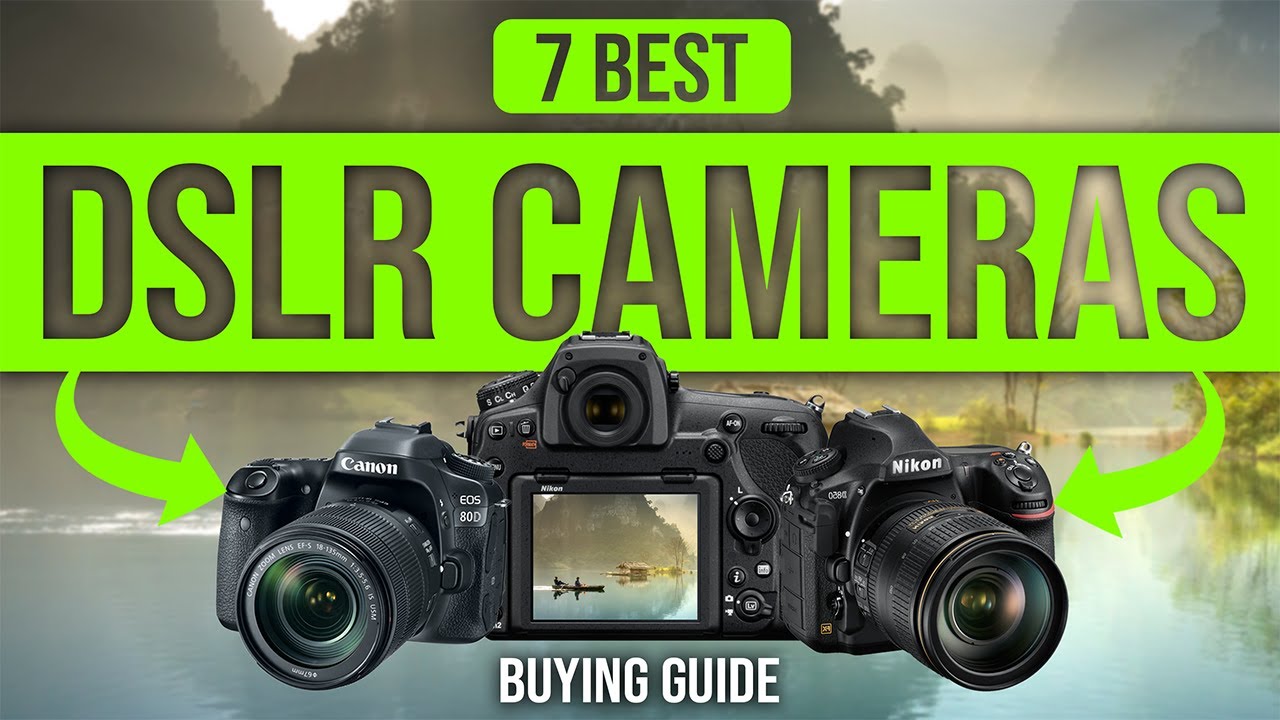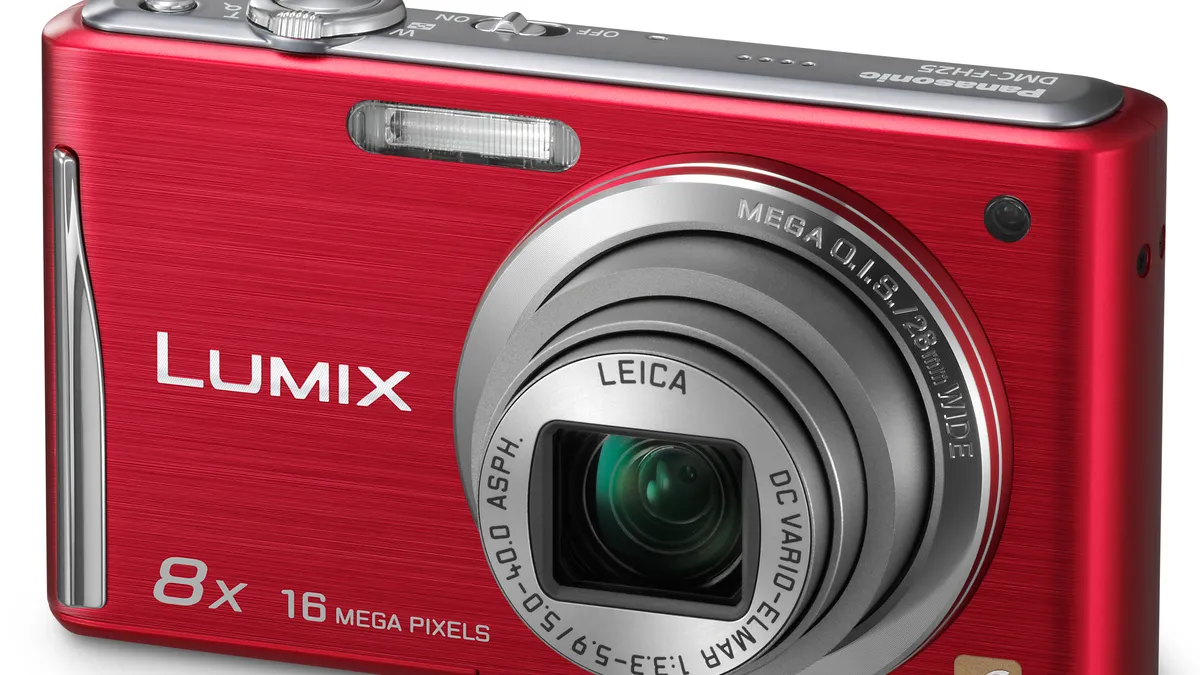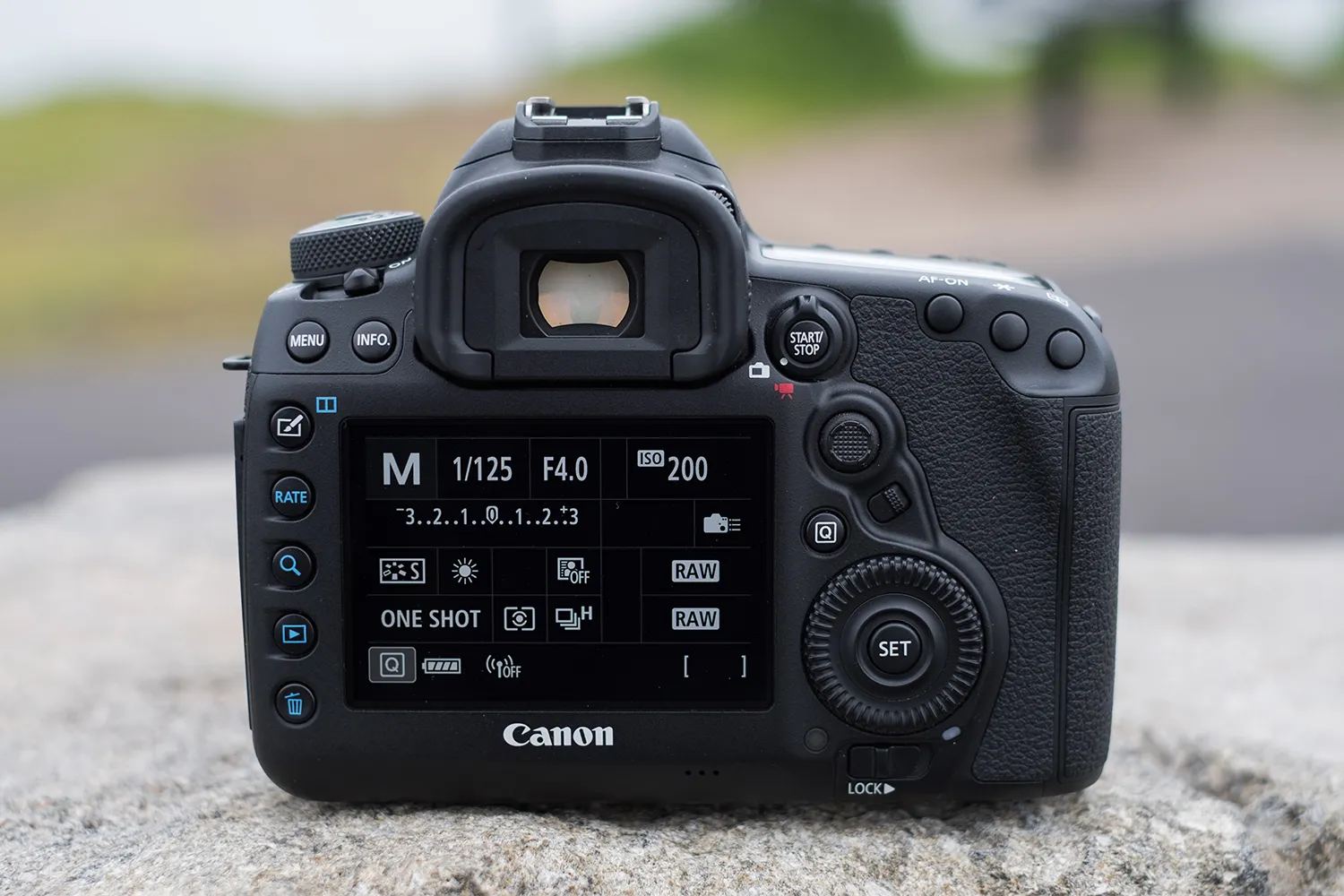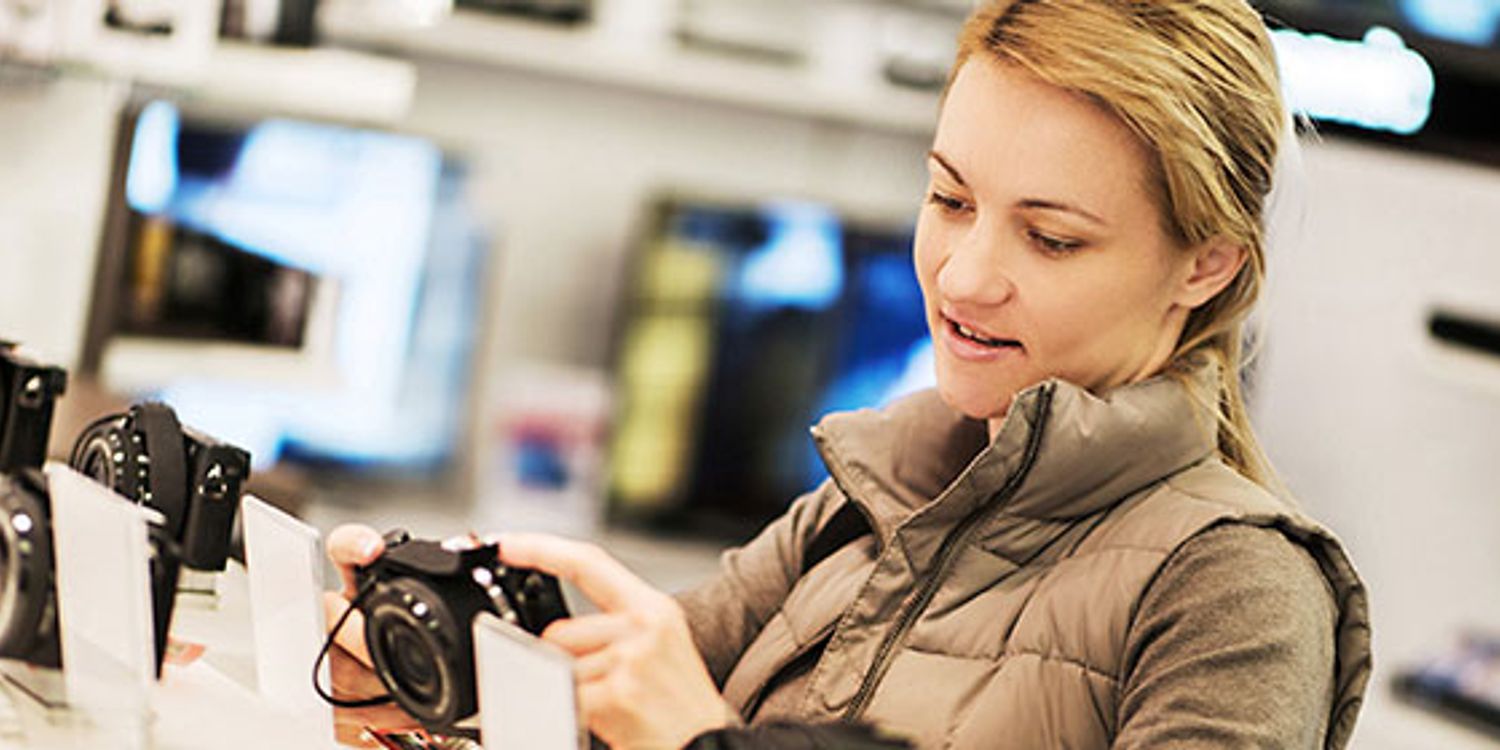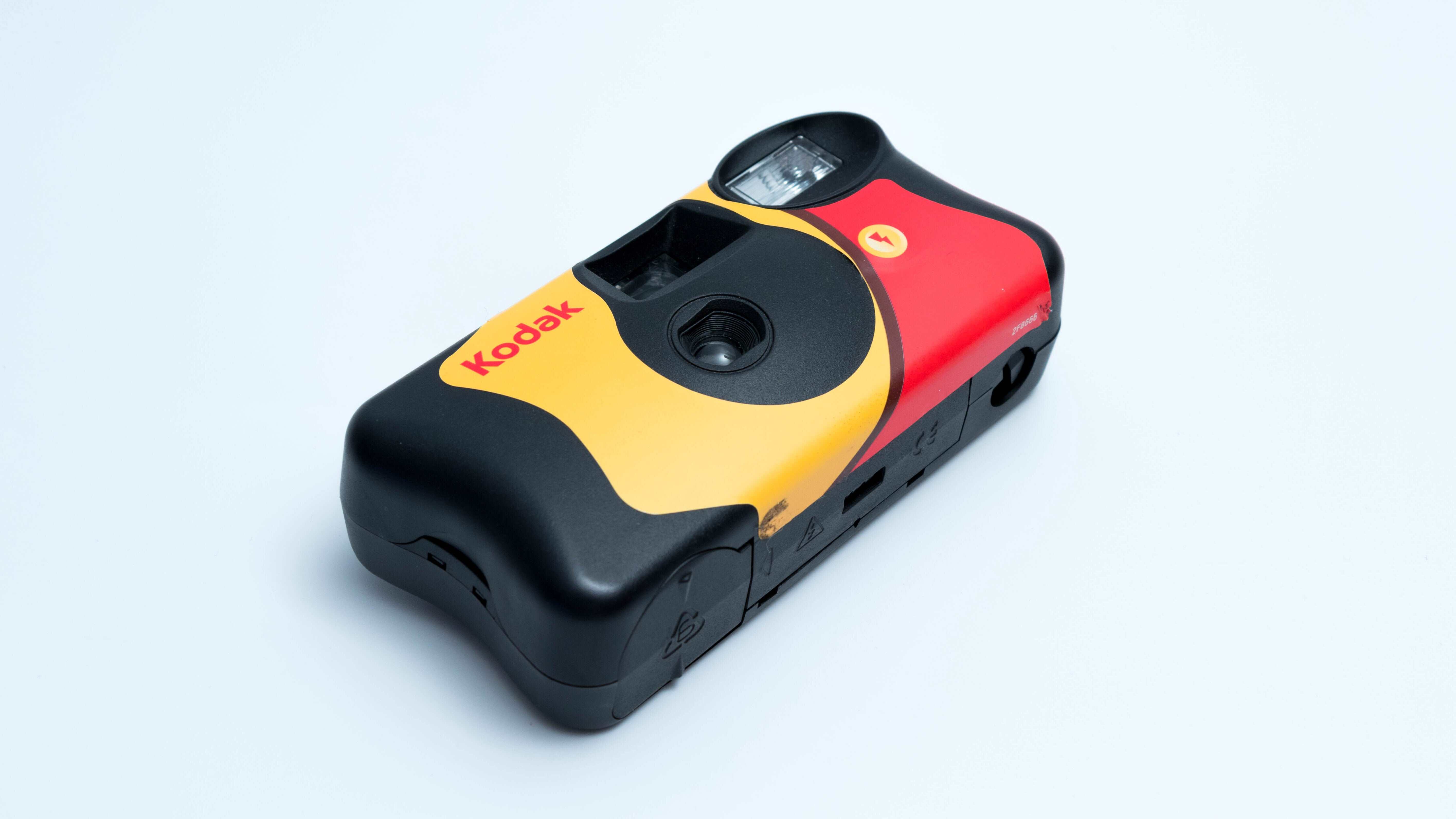Introduction
Welcome to the world of digital photography, where the possibilities are endless. Whether you’re an amateur photographer looking to capture memorable moments or a professional seeking to showcase your creative vision, choosing the right digital camera is essential. With the vast array of options available in the market, it can be challenging to determine which camera is the best fit for your needs.
In this article, we will explore the factors to consider when selecting a digital camera and provide top recommendations to help you make an informed decision. From sensor size and lens options to image stabilization and shooting modes, each aspect plays a crucial role in capturing stunning photographs. Additionally, we will delve into video recording capabilities, connectivity options, and other essential features that make a digital camera versatile and user-friendly.
When it comes to choosing a digital camera, it’s important to strike a balance between quality, functionality, and affordability. The perfect camera for you will depend on your specific requirements, whether you’re a beginner, an enthusiast, or a professional. By understanding the key factors to consider and exploring the top recommendations, you can find the best digital camera that suits your needs and elevates your photography to new heights.
So, let’s dive into the world of digital cameras and explore the features, specifications, and recommendations that will help you find your perfect match. Whether you’re capturing breathtaking landscapes, precious family moments, or embarking on creative projects, a stellar digital camera is your gateway to creating stunning images.
Factors to Consider When Choosing a Digital Camera
Choosing the right digital camera can be a daunting task, considering the plethora of options available in the market. To ensure that you make an informed decision, it’s important to consider several factors that will impact your photography experience. Here are some key factors to keep in mind:
- Sensor Size and Megapixels: The size of the sensor and the number of megapixels determine the image quality and detail. Larger sensors generally offer better low-light performance and dynamic range.
- Lens Options and Compatibility: The availability of interchangeable lenses allows for versatility in capturing different types of shots. Consider a camera that offers a wide range of lens options and compatibility with various lens manufacturers.
- Image Stabilization: This feature helps compensate for camera shake and ensures sharper images, especially in low-light conditions or when using long focal lengths. Look for cameras with in-body or optical image stabilization.
- ISO Range and Low Light Performance: A wider ISO range enables you to shoot in different lighting conditions without sacrificing image quality. Cameras with good low-light performance can produce cleaner and less noisy images.
- Autofocus System: A fast and accurate autofocus system is essential for capturing moving subjects and achieving precise focus. Look for cameras with advanced autofocus technologies that offer superior tracking capabilities.
- Shooting Modes and Manual Controls: Consider whether you prefer a camera with easy-to-use shooting modes or one that provides extensive manual control options. This will depend on your level of expertise and shooting style.
- Video Recording Capabilities: If you’re interested in videography, pay attention to the camera’s video specifications, including resolution, frame rates, and additional video features like high-speed recording or log profiles.
- Connectivity and Sharing Options: Built-in Wi-Fi, Bluetooth, or NFC capabilities allow for seamless transfer of images to your smartphone or tablet. Some cameras also offer remote control functionality for convenient shooting.
- Size, Weight, and Portability: Consider the camera’s size and weight, especially if you plan to travel or shoot on the go. Compact and lightweight cameras are preferable for those seeking portability.
- Battery Life: A camera with good battery life ensures that you can shoot for extended periods without worrying about running out of power. Look for cameras with long-lasting batteries or the ability to use external battery packs.
- Price Range and Budget: Determine your budget and find a camera that offers the best value within that range. Consider the cost of additional accessories, such as lenses, memory cards, and camera bags.
By weighing these factors according to your specific needs and preferences, you can narrow down your options and find a digital camera that suits you best. Let’s explore some top recommendations in the next section to help you make your decision.
Sensor Size and Megapixels
The sensor size and number of megapixels of a digital camera play a crucial role in determining the image quality and level of detail captured in your photographs. The sensor is the component that captures the incoming light and converts it into an electrical signal, which is then processed to form an image.
When it comes to sensor size, larger sensors generally perform better in low-light conditions and offer improved dynamic range. They can capture more light, resulting in less noise and better image quality. Full-frame sensors, which are equivalent to traditional 35mm film, are considered the gold standard in terms of image quality and performance. They are typically found in professional-grade cameras but are now becoming more accessible in the market.
On the other hand, smaller sensors are often found in compact cameras or entry-level DSLRs. While they may not match the image quality of larger sensors, they still offer good performance and are more portable. Micro Four Thirds sensors, for example, are smaller but still deliver excellent image quality, making them a popular choice among enthusiasts and travel photographers.
In addition to sensor size, the number of megapixels also affects the level of detail in your photos. A higher megapixel count allows for more extensive cropping and detailed enlargements while maintaining image quality. However, it’s important to note that megapixels are not the sole determinant of image quality. Other factors like sensor technology, lens quality, and image processing also contribute to the overall image performance.
When selecting a digital camera, consider how you plan to use your photos. If you primarily view and share images digitally, a camera with a moderate megapixel count may suffice. However, if you often print your photos in large formats or desire greater cropping flexibility, opting for a camera with higher megapixels may be advantageous.
Ultimately, the choice between sensor size and megapixels depends on your specific needs and shooting preferences. If image quality is a top priority and you have the budget for it, a camera with a larger sensor and higher megapixel count is recommended. However, if portability and versatility are more important to you, a camera with a smaller sensor may be a better fit.
Now that we’ve explored the importance of sensor size and megapixels, let’s move on to the next factor to consider when choosing a digital camera.
Lens Options and Compatibility
When choosing a digital camera, one of the key factors to consider is the availability of lens options and compatibility. The lens you use has a significant impact on the types of shots you can capture and the overall image quality.
Interchangeable lens cameras, such as DSLRs and mirrorless cameras, offer the advantage of using different lenses for various shooting scenarios. These cameras typically have a lens mount system that allows you to attach and detach lenses, providing versatility and creative control.
One of the main considerations when it comes to lens options is the focal length. Different lenses have varying focal lengths, which affects the angle of view and perspective of your images. Wide-angle lenses are great for capturing expansive landscapes or fitting more into the frame, while telephoto lenses allow you to zoom in closer to distant subjects.
Furthermore, lens compatibility is crucial. Some camera systems have a wide range of lenses available from the same manufacturer, providing a seamless integration with the camera body. It’s essential to research the lens options available for the camera you’re considering and ensure that they meet your specific needs.
Additionally, third-party lens manufacturers, such as Sigma and Tamron, offer lenses that are compatible with multiple camera systems. These lenses can be a more affordable alternative or provide unique features not found in manufacturer-specific lenses. However, it’s important to check the compatibility and performance of third-party lenses with your chosen camera system before making a purchase.
Consider the types of photography you enjoy or plan to pursue. If you’re interested in landscape photography, a wide-angle lens may be a priority. For portrait photography, a lens with a moderate focal length, such as a 50mm or 85mm lens, can achieve pleasing results. If you’re into wildlife or sports photography, telephoto lenses with long reach are essential.
Furthermore, lens quality is crucial for achieving sharpness, clarity, and accurate color reproduction in your images. Higher-end lenses often offer advanced optics, such as extra-low dispersion (ED) elements or aspherical elements, which minimize aberrations and enhance overall image quality.
Keep in mind that investing in a camera system is not just about the camera body; it’s also about the lenses that you can use with it. Assess your photography needs, research the lens options available for your chosen camera system, and ensure compatibility to make an informed decision.
Now that we’ve covered lens options and compatibility, let’s move on to the next factor to consider when choosing a digital camera.
Image Stabilization
Image stabilization is a vital feature to consider when choosing a digital camera, especially if you frequently shoot in challenging conditions or use long focal lengths. It helps compensate for camera shake, resulting in sharper images and reducing the likelihood of blurriness.
There are two main types of image stabilization: in-body stabilization and lens-based stabilization.
In-Body Stabilization: This type of stabilization is incorporated within the camera body itself. It works by using sensors to detect camera movement and then shifting the image sensor to counteract the shake. In-body stabilization is advantageous because it can be used with any lens attached to the camera, providing stabilization regardless of the lens used. This is particularly beneficial if you have multiple lenses or plan to invest in lenses with different stabilization capabilities.
Lens-Based Stabilization: This type of stabilization is built into specific lenses and relies on internal mechanisms to correct camera shake. The stabilization occurs within the lens, compensating for any movements detected. Lens-based stabilization has the advantage of being more effective at combating shake when shooting at longer focal lengths, as the stabilization is optimized for the specific lens.
Both in-body and lens-based stabilization systems have their merits, and the choice between them ultimately depends on your shooting style and the lenses you intend to use. It’s essential to check whether the camera or lens you are interested in has image stabilization and to what extent it performs. Some cameras even offer a combination of both in-body and lens-based stabilization systems, providing optimal stability for various shooting scenarios.
Image stabilization is particularly valuable in low-light conditions, where longer shutter speeds are often required. It allows you to capture handheld shots with less blur, enabling you to shoot in dimly lit environments without sacrificing image quality. Additionally, image stabilization is beneficial when shooting video, as it helps to smooth out any unwanted camera movements, resulting in steadier footage.
Keep in mind that image stabilization is not a substitute for using a sturdy tripod or proper shooting techniques. However, it provides an extra layer of stability when shooting handheld, allowing you to capture sharp images even in less than ideal conditions.
When considering a digital camera, evaluate the type of image stabilization it offers and research user reviews to assess its effectiveness. Image stabilization can greatly improve the quality of your photographs, especially in situations where camera shake is a common challenge.
Now that we’ve discussed image stabilization, let’s move on to the next factor to consider when choosing a digital camera.
ISO Range and Low Light Performance
When it comes to photography, lighting conditions can greatly affect the outcome of your images. That’s why considering the ISO range and low light performance of a digital camera is crucial, especially if you often find yourself shooting in challenging lighting situations.
ISO refers to the sensitivity of the camera’s image sensor to light. A higher ISO setting allows the sensor to capture more light, making it suitable for low light environments. However, increasing the ISO also introduces more digital noise or grain in the image, which can degrade the overall quality.
Modern digital cameras have made significant advancements in low light performance, enabling photographers to capture stunning images in dimly lit scenes. Higher-end cameras typically offer a broader ISO range and perform better at higher ISO settings, producing cleaner and less noisy images.
When considering a digital camera, assess the advertised ISO range and research user reviews or sample images to gauge its low light performance. Look for cameras that can handle higher ISO settings without significant loss of image quality.
Aside from the ISO range, other factors influence low light performance, such as the camera’s sensor size, sensor technology, and image processing capabilities. Cameras with larger sensors, such as full-frame or APS-C sensors, tend to perform better in low light due to their larger pixel size and improved light-gathering capabilities.
Additionally, advancements in sensor technology, such as backside-illuminated (BSI) sensors, have improved the ability to capture more light, resulting in better low light image quality. Camera manufacturers also employ sophisticated noise reduction algorithms in their image processing to minimize noise and retain detail in low light conditions.
It’s important to bear in mind that a camera’s low light performance is not solely determined by its maximum ISO setting. The overall image quality, dynamic range, and noise performance at various ISO settings should be considered to ensure excellent low light results.
If you often shoot in low light environments or enjoy capturing nighttime scenes, a camera with a broader ISO range and exceptional low light performance is highly recommended. It enables you to maintain image quality even in challenging lighting conditions, allowing for more creative possibilities.
Now that we’ve looked at the importance of ISO range and low light performance, let’s move on to the next factor to consider when choosing a digital camera.
Autofocus System
The autofocus system is a critical consideration when choosing a digital camera, as it directly affects the speed, accuracy, and versatility of focusing in various shooting scenarios. Whether you’re capturing fast-moving action or shooting portraits with shallow depth of field, a reliable autofocus system is essential.
Autofocus systems have evolved significantly over the years, with advanced technologies and algorithms that enable cameras to quickly and accurately lock focus on subjects. There are several key aspects to consider when evaluating the autofocus capabilities of a camera:
Focus Points and Coverage: The number and positioning of autofocus points determine how effectively the camera can track and focus on subjects. More focus points, especially cross-type points, provide better coverage and improve accuracy, particularly in challenging lighting conditions.
Focus Speed and Tracking: The speed at which the camera can achieve focus and track moving subjects is crucial, especially for sports, wildlife, or any fast-paced photography. Look for cameras with fast autofocus systems that can keep up with the action and maintain focus consistently.
Eye Detection and Face Detection: Modern autofocus systems often include advanced features like eye detection and face detection, which help ensure accurate focus on a subject’s eyes or face. This is particularly beneficial for portrait photography, ensuring sharp focus on the most critical areas of the image.
Focus Modes and Customization: Different focus modes, such as single-shot autofocus (AF-S) and continuous autofocus (AF-C), provide flexibility for various shooting situations. The ability to customize and fine-tune autofocus settings to match your shooting style or specific requirements can also be advantageous.
Low Light Autofocus Performance: Evaluating how well the autofocus system performs in low light conditions is crucial, as some cameras may struggle to achieve accurate focus in dimly lit environments. Look for cameras that have reliable autofocus performance under challenging lighting situations.
When considering a camera’s autofocus system, it’s recommended to test the performance or read reviews from trusted sources to ensure its capabilities align with your needs. Keep in mind that the autofocus system works in tandem with the lens being used, so it’s important to consider the compatibility and performance of both to achieve optimal focus performance.
For photographers who often capture dynamic subjects or require precise focus in various situations, a camera with a robust autofocus system is essential. It allows you to focus quickly and accurately, enabling you to capture decisive moments without missing a beat.
Now that we’ve explored the importance of the autofocus system, let’s move on to the next factor to consider when choosing a digital camera.
Shooting Modes and Manual Controls
When choosing a digital camera, it’s essential to consider the available shooting modes and manual controls. These features allow you to have creative control over your photographs and tailor the camera’s settings to your specific needs and shooting style.
Shooting modes provide predefined settings that optimize the camera’s configurations for certain types of scenes or effects. Common shooting modes include auto, portrait, landscape, sports, and macro. These modes can be beneficial for beginners or when quick and straightforward adjustments are desired.
However, for photographers who prefer more control, having access to manual controls is essential. Manual exposure modes, such as aperture priority (Av), shutter priority (Tv), and full manual (M), allow you to adjust key settings like aperture, shutter speed, and ISO manually. This level of control enables you to achieve your desired creative vision by fine-tuning exposure and depth of field.
Another aspect to consider is the availability and ease of access to essential controls like exposure compensation, white balance, and metering modes. These controls allow for further customization and adjustments to achieve the desired look and feel of your images.
Furthermore, the presence of customizable function buttons or programmable dials can significantly enhance your shooting experience. Being able to assign specific functions or settings to these buttons or dials allows for quick adjustments and easy access to frequently used features.
Consider your shooting style and preferences when assessing the shooting modes and manual controls of a camera. If you enjoy experimenting and fine-tuning your settings to achieve the perfect exposure, a camera with robust manual control options would be beneficial. On the other hand, if you prefer a more streamlined shooting experience or are just starting out, a camera with well-implemented automatic shooting modes can simplify the process.
Remember, having manual controls can help you grow as a photographer by giving you the flexibility to explore different techniques and fully control the look of your images. However, if you find manual adjustments overwhelming at first, don’t hesitate to experiment with semi-automatic modes and gradually transition to full manual control as you gain confidence and experience.
Now that we’ve discussed the importance of shooting modes and manual controls, let’s move on to the next factor to consider when choosing a digital camera.
Video Recording Capabilities
In today’s digital age, video recording has become an essential feature for many photographers. Whether you’re capturing stunning landscapes in motion or documenting special moments, a camera with excellent video recording capabilities can elevate your storytelling and expand your creative possibilities.
When considering a digital camera for its video capabilities, several factors should be taken into account:
Video Resolution and Frame Rates: The camera’s video resolution determines the level of detail in your videos. Higher resolutions, such as 4K or even 8K, offer more clarity and sharpness. Additionally, the availability of different frame rates allows for creating smooth and cinematic footage, whether you prefer a standard 24 frames per second (fps) or higher frame rates for slow-motion capture.
Video Codecs and Bitrate: The camera’s video codecs and bitrate affect the compression and quality of the recorded video. Look for cameras that offer support for robust video codecs like H.264 or H.265, along with high bitrate options, to ensure better image quality and flexibility in post-production.
Recording Format: Consider whether the camera records in a format that is compatible with your editing software or workflow. Common formats include MP4, MOV, or AVCHD. Some cameras also offer RAW video recording, providing greater flexibility and control in post-processing.
Dynamic Range and Color Profiles: Professional video recording often requires a camera with a wide dynamic range to capture a greater range of details in highlights and shadows. Look for cameras with in-camera color profiles or log profiles that offer more flexibility in post-production color grading and tonal adjustments.
Audio Recording: Pay attention to the camera’s audio recording capabilities, including microphone inputs and built-in microphones. High-quality audio is crucial for capturing clear and immersive sound in your videos.
Stabilization and Focus during Video Capture: Smooth and stable footage is essential for professional-looking videos. Look for cameras with in-body or lens-based stabilization systems to minimize camera shake. Additionally, reliable autofocus during video recording ensures that your subjects stay in focus, particularly when shooting moving subjects or vlogging.
Video recording capabilities are becoming increasingly important in the digital camera market, with many models offering advanced features specifically tailored for videography. Some cameras even provide dedicated video modes with customizable settings and additional features like zebra patterns, focus peaking, or even built-in ND filters to enhance your shooting experience.
Whether you’re a professional videographer or a photographer looking to expand your creative horizons with video, considering a digital camera with robust video recording capabilities is essential. It allows you to capture memorable moments and express your creativity through moving images.
Now that we’ve discussed video recording capabilities, let’s move on to the next factor to consider when choosing a digital camera.
Connectivity and Sharing Options
In today’s interconnected world, the ability to quickly and easily share your photos and videos is a significant consideration when choosing a digital camera. Look for cameras that offer a range of connectivity options to streamline the process of transferring and sharing your images.
Wi-Fi and NFC: Built-in Wi-Fi allows you to connect your camera to a smartphone, tablet, or computer wirelessly. This feature enables you to transfer images directly to your devices for quick sharing on social media or sending to clients. Near Field Communication (NFC) offers a convenient way to establish a connection between your camera and compatible devices with a simple tap.
Bluetooth: Bluetooth connectivity can be advantageous if you prefer a constant connection between your camera and smartphone. It allows for seamless image transfer and remote control functionality, giving you the flexibility to trigger the camera from a distance.
GPS: Some cameras offer built-in GPS functionality, which can be useful for geotagging your photos. Geotagging allows you to record the precise location where each image is taken, making it easier to organize and search for your photos based on location.
Remote Control: Consider whether the camera provides remote control capabilities. This feature enables you to control the camera wirelessly from your smartphone or tablet, allowing for hands-free shooting or shooting from unconventional angles.
Expandable Storage: Assess the availability of memory card slots in the camera. Having the option to use multiple memory cards or high-capacity cards ensures ample storage space for your images, especially when shooting for extended periods or capturing videos in high resolution.
Integration with Editing and Sharing Software: Research whether the camera is compatible with popular editing and sharing software. Compatibility with software like Adobe Lightroom or Capture One allows for a seamless workflow from shooting to post-processing, making it easier to organize, edit, and share your images.
Considering the connectivity and sharing options of a digital camera can greatly enhance your efficiency and workflow. It allows you to quickly share your work with others and facilitates seamless integration with your preferred devices and software.
Before making a purchase, check the camera’s specifications and user reviews to ensure that the connectivity options align with your needs. Remember, having efficient connectivity and sharing options can save you time and make the sharing process more convenient.
Now that we’ve covered connectivity and sharing options, let’s move on to the next factor to consider when choosing a digital camera.
Size, Weight, and Portability
The size, weight, and portability of a digital camera are important factors to consider, particularly if you’re frequently on the move or enjoy traveling. The right balance between functionality and portability ensures that your camera is easy to carry and ready to capture those spontaneous moments wherever you go.
Smaller and lighter cameras, such as mirrorless cameras or compact point-and-shoot cameras, are highly portable and suitable for everyday use. They are ideal for street photography, travel photography, and situations where you prefer to have a lightweight setup without compromising image quality.
On the other hand, larger cameras, such as professional-grade DSLRs, offer enhanced performance, durability, and ergonomic controls. While these cameras may be bulkier and heavier, they often provide better image quality, advanced features, and more extensive lens options.
Consider the size and weight of the camera in relation to your shooting style and preferences. If maximum portability is essential and you prefer to travel light, a smaller and lighter camera would be the ideal choice. However, if you prioritize advanced features, improved image quality, and a more robust build, a larger camera might be the better option.
In addition to the camera body, consider the weight and size of the lenses you plan to use. Compact and lightweight lenses further enhance portability, making it easier to carry additional lenses without adding excessive weight to your camera bag.
When evaluating the size and weight, it’s important to strike a balance between portability and the comfort of handling the camera. A camera that feels comfortable and ergonomic in your hands allows for a more enjoyable shooting experience, especially during long photo sessions or when shooting in challenging conditions.
Ultimately, choosing a camera with the right size, weight, and level of portability depends on your specific needs, shooting preferences, and intended usage. Consider your shooting environment, the level of mobility required, and how you plan to transport your equipment before making a decision.
Now that we’ve discussed the importance of size, weight, and portability, let’s move on to the next factor to consider when choosing a digital camera.
Battery Life
Battery life is a crucial factor to consider when choosing a digital camera, as it directly impacts the amount of time you can shoot without needing to recharge or replace the batteries. Having a camera with reliable battery life ensures that you can capture more photos or record videos without interruptions.
Various factors influence battery life, including the camera’s power consumption, the type of batteries used, and the shooting conditions. Generally, larger cameras with complex features and high-performance capabilities tend to consume more power, resulting in shorter battery life.
When evaluating the battery life of a camera, it’s important to check the specifications provided by the manufacturer and consult user reviews or tests to get a realistic idea of how long the battery lasts in real-world situations. Manufacturers often specify the number of shots that can be taken on a single charge or the duration of continuous video recording.
Keep in mind that actual battery life may vary based on factors such as the usage of power-hungry features like image stabilization or continuous autofocus, the ambient temperature, the frequency of LCD screen use, and the use of a built-in flash. It’s advisable to have spare batteries or a backup power source, especially for photographers who engage in extended or intensive shooting sessions.
If long battery life is a priority for you, consider cameras with efficient power management systems and the option to use high-capacity batteries. Some camera models may offer extended battery grips or external battery packs that can be helpful for prolonged shooting sessions or when shooting in remote locations without access to power outlets.
Battery performance is an essential consideration, particularly for photographers who frequently travel or engage in outdoor activities. The ability to shoot for extended periods without worrying about running out of power provides peace of mind and allows you to focus on capturing the perfect moments.
Now that we’ve discussed the importance of battery life, let’s move on to the final factor to consider when choosing a digital camera.
Price Range and Budget
The price range and budget are crucial factors to consider when choosing a digital camera. The cost of a camera can vary significantly based on factors such as brand, features, sensor size, and overall performance. It’s important to determine your budget and find a camera that offers the best value within that range.
Before making a purchase, consider your photography needs and goals. Are you a beginner looking to explore photography as a hobby? Or are you a professional seeking advanced features and optimal image quality? Understanding your level of expertise and the intended use of the camera can help you establish a reasonable budget.
Keep in mind that the initial cost of the camera is not the only expense to consider. Additional accessories like lenses, memory cards, camera bags, tripods, and external flashes may be necessary, depending on your shooting style and requirements. It’s essential to factor in the cost of these accessories when determining your budget.
Research is critical when comparing prices and features across different camera models. Look for cameras that offer the best combination of features, performance, and reliability within your budget range. Consider reading reviews, comparing specifications, and seeking recommendations from trusted sources to make an informed decision.
While it may be tempting to go for the most advanced and feature-rich camera within your price range, it’s important to assess your specific needs. Consider which features are essential for your photography style and prioritize them. It’s often better to invest in quality lenses and other accessories that can greatly impact the overall image quality, rather than purely focusing on the camera body.
Remember that your budget may fluctuate based on your current financial situation, so it’s essential to set a realistic budget that aligns with your resources and long-term goals. Assess the value and performance that a camera offers relative to its price, and aim for a balance between affordability and the features that are most important to you.
By establishing a clear budget and understanding your photography requirements, you can narrow down your options and find a digital camera that provides the best value for your investment.
Now that we’ve discussed the importance of price range and budget, let’s wrap up our guide to choosing a digital camera.
Top Recommendations for Digital Cameras
With the multitude of options available in the market, it can be overwhelming to choose the right digital camera. To help narrow down your choices, here are some top recommendations that offer a range of features and performance to suit different photography needs:
- Canon EOS R6: This mirrorless camera boasts a full-frame sensor, excellent low-light performance, and advanced autofocus capabilities. With its 20.1 megapixel resolution, 4K video recording, and impressive image stabilization, it’s a versatile camera suitable for both photography and videography.
- Sony Alpha A7 III: This full-frame mirrorless camera offers exceptional image quality, a wide ISO range, and impressive autofocus performance. It features a 24.2 megapixel sensor, 4K video recording, and excellent low light performance, making it a popular choice among enthusiasts and professionals alike.
- Nikon D850: This high-resolution DSLR camera boasts a 45.7 megapixel sensor and exceptional image quality. With its advanced autofocus system and robust build, it’s well-suited for landscape photography, portrait photography, and many other genres.
- Fujifilm X-T4: This mirrorless camera from Fujifilm offers a perfect blend of image quality, portability, and advanced features. With its 26.1-megapixel APS-C sensor, in-body image stabilization, and intuitive controls, it’s an excellent choice for both photography and videography enthusiasts.
- Panasonic Lumix GH5: This mirrorless camera excels in video recording capabilities with its 4K resolution, high frame rates, and professional-level features. It also offers a 20.3-megapixel sensor, impressive image stabilization, and a versatile set of shooting options, making it a top choice for videographers.
These cameras represent just a few of the many options available in the market. Each of them offers unique features, superior imaging capabilities, and excellent performance in different shooting scenarios. When making a final decision, consider your specific photography needs, budget, and the features that are most important to you.
Remember, the best camera for you is the one that aligns with your personal preferences, shooting style, and budget. Whether you’re a beginner or an experienced professional, there is a digital camera out there that will help you capture stunning images and unleash your creativity.
Now that we’ve explored the top recommendations for digital cameras, it’s time to make your choice and embark on your photography journey with confidence.
Canon EOS R6
The Canon EOS R6 is a highly recommended digital camera that offers an impressive combination of features, performance, and versatility. This mirrorless camera is equipped with a full-frame 20.1 megapixel CMOS sensor, which delivers excellent image quality with exceptional low-light performance and a wide dynamic range.
One of the standout features of the EOS R6 is its advanced autofocus system. With Canon’s renowned Dual Pixel CMOS AF II, the camera offers fast and accurate focusing, ensuring sharp and well-focused images even in challenging shooting conditions. The autofocus tracking is particularly impressive, making it a fantastic option for capturing fast-moving subjects such as wildlife or sports.
The EOS R6 also excels in video recording capabilities, supporting 4K video at up to 60 frames per second. It provides impressive image stabilization, allowing for smooth handheld footage. Additionally, the camera offers various video features, including Canon Log, HDR PQ mode, and high-speed recording options, making it a versatile choice for videographers.
In terms of usability, the EOS R6 features a comfortable and intuitive design, with a vari-angle LCD touchscreen and a high-resolution electronic viewfinder. It offers a wide range of dials, buttons, and customizable controls, allowing for easy access to essential settings and customization options to suit individual preferences.
Connectivity options on the EOS R6 are also comprehensive, with built-in Wi-Fi and Bluetooth for seamless wireless image transfer and remote control functionality. It supports dual memory card slots (CFexpress and SD), offering ample storage space and flexibility for professionals who require redundancy or extended shooting sessions.
Whether you’re a professional photographer or an enthusiast, the Canon EOS R6 is a top recommendation due to its exceptional performance, advanced features, and overall versatility. It combines impressive image quality, robust autofocus capabilities, and excellent video recording capabilities, making it suitable for a wide range of photography genres and videography projects.
If you’re looking for a reliable and high-performance camera that delivers outstanding results, the Canon EOS R6 is certainly a top contender to consider.
Sony Alpha A7 III
The Sony Alpha A7 III is a top recommendation for those seeking a full-frame mirrorless camera offering exceptional image quality, advanced features, and impressive performance. With its 24.2 megapixel Exmor R CMOS sensor and advanced BIONZ X image processor, the A7 III delivers stunning detail, dynamic range, and low-light performance.
The A7 III stands out with its remarkable autofocus system, incorporating 693 phase-detection autofocus points and 425 contrast-detection autofocus points. This combination provides fast, accurate, and reliable autofocus, ensuring sharp focus for both stills and videos. The Eye AF and Face Detection features further enhance the accuracy and speed of subject tracking, making it an excellent choice for portrait, wedding, and event photography.
Video enthusiasts will also appreciate the A7 III’s 4K video recording capabilities, supporting full pixel readout without pixel binning for exceptional clarity and detail. It offers various frame rate options, including 24p and 30p, and supports S-Log profiles for increased dynamic range and flexibility in post-processing. The camera’s in-body image stabilization further enhances video stability, reducing camera shake for smoother footage.
Ergonomics and usability are well-considered in the A7 III’s design. It features a comfortable grip, intuitive controls, and a weather-sealed magnesium alloy body for durability and reliability in various shooting conditions. The high-resolution electronic viewfinder and tilting LCD screen provide excellent visibility and flexibility for composing shots from different angles.
Connectivity options on the A7 III include built-in Wi-Fi, NFC, and Bluetooth, enabling seamless wireless image transfer and remote control through the Sony PlayMemories app. Dual memory card slots, supporting both SD and UHS-II memory cards, offer increased storage capacity and data backup options.
With its outstanding image quality, advanced autofocus system, impressive video capabilities, and user-friendly interface, the Sony Alpha A7 III is an excellent choice for photographers and videographers of all levels. It strikes a balance between performance and affordability, making it a compelling option for those looking to upgrade from an entry-level camera or seeking a versatile camera for professional use.
If you’re in search of a reliable and feature-rich camera that delivers remarkable image quality and performance, the Sony Alpha A7 III is certainly a top contender to consider.
Nikon D850
The Nikon D850 is a highly recommended digital camera that combines exceptional image quality, versatility, and advanced features. This full-frame DSLR camera features a 45.7 megapixel sensor, delivering stunning detail, dynamic range, and excellent low-light performance.
One of the standout features of the D850 is its robust autofocus system. With 153 focus points, including 99 cross-type sensors, the camera offers fast and accurate focusing in a wide range of shooting conditions. The advanced autofocus system ensures sharp and precise subject tracking, making it a preferred choice for sports, wildlife, and action photography.
The D850 also excels in video recording capabilities. It supports 4K UHD video at up to 30 frames per second, providing outstanding image quality and detail. Additionally, the camera offers various video features, including Flat Picture Control, Focus Peaking, and zebra patterns, giving videographers greater flexibility and control over their footage.
Another notable feature of the D850 is its impressive continuous shooting capability. With a high-speed 9 frames-per-second burst rate, combined with a large buffer capacity, the camera can capture fast-paced action with precision and ease.
Ergonomics and durability are well-considered in the D850’s design. It features a robust magnesium alloy body with weather sealing, providing protection against dust and moisture. The camera’s intuitive button placement and comfortable grip enhance handling and usability, allowing for extended shooting sessions without discomfort.
Connectivity options on the D850 include built-in Wi-Fi and Bluetooth, enabling seamless wireless image transfer and remote camera control through the Nikon SnapBridge app. The camera also offers dual memory card slots (one XQD and one SD), providing flexibility for storage and backup options.
With its exceptional image quality, advanced autofocus system, impressive video capabilities, and rugged build, the Nikon D850 is a top choice for professional photographers and enthusiasts alike. It offers versatility for a wide range of genres, from studio work to outdoor adventures, making it an ideal camera for those seeking uncompromising image quality and reliability.
If you’re in the market for a high-performance camera with outstanding image quality and a plethora of features, the Nikon D850 is definitely worth considering for your photography needs.
Fujifilm X-T4
The Fujifilm X-T4 is a highly recommended mirrorless camera that combines impressive image quality, advanced features, and superb build quality. With its 26.1-megapixel APS-C sensor and X-Processor 4 image processor, the X-T4 delivers outstanding image detail, rich colors, and excellent low-light performance.
One of the standout features of the X-T4 is its in-body image stabilization (IBIS) system. With up to 6.5 stops of stabilization, the camera compensates for camera shake, allowing for sharper handheld shots and smoother video recording. The IBIS system is particularly valuable when using lenses without optical stabilization, expanding the versatility of the camera in various shooting scenarios.
The X-T4 boasts an advanced autofocus system, featuring 425 phase-detection autofocus points and an improved algorithm. This provides faster and more accurate autofocus performance, ensuring sharp focus on subjects, especially in challenging conditions.
In terms of video capabilities, the X-T4 is impressive. It supports 4K video recording at up to 60 frames per second, providing excellent video quality and detail. The camera offers a range of video features, including F-Log and HLG profiles, film simulations, and a high-quality internal microphone for improved audio recording.
Ergonomics and usability are key strengths of the X-T4. The camera features a retro-inspired, robust magnesium alloy body with weather sealing, making it well-suited for outdoor and travel photography. It offers intuitive manual controls, including dedicated dials for shutter speed, ISO, and exposure compensation, allowing for quick and easy adjustments while shooting.
Connectivity options on the X-T4 include built-in Wi-Fi and Bluetooth, enabling seamless wireless image transfer and remote camera control through the Fujifilm Camera Remote app. The camera also features dual UHS-II SD card slots, allowing for extended shooting sessions and backup storage capability.
The Fujifilm X-T4 is an excellent choice for enthusiasts and professionals seeking a versatile camera with exceptional image quality, advanced features, and a user-friendly interface. Its combination of outstanding image stabilization, autofocus performance, video capabilities, and build quality make it a fantastic option for a wide range of photography genres, from street photography and portraiture to wildlife and landscapes.
If you’re in search of a reliable and feature-rich camera that delivers remarkable image quality and performance, the Fujifilm X-T4 is certainly a top contender to consider.
Panasonic Lumix GH5
The Panasonic Lumix GH5 is an exceptional choice for videographers and photographers looking for a versatile and feature-packed camera. With its Micro Four Thirds 20.3-megapixel sensor and Venus Engine image processor, the GH5 delivers outstanding image quality, impressive dynamic range, and excellent low-light performance.
One of the standout features of the GH5 is its remarkable video recording capabilities. It supports cinema 4K resolution (4096 x 2160) at up to 60 frames per second and 4K UHD resolution (3840 x 2160) at up to 60 frames per second, providing exceptional video quality. Additionally, the GH5 offers various professional-grade video features, including unlimited recording time, 10-bit internal recording, and support for multiple recording formats, such as MOV, MP4, and AVCHD.
The GH5 boasts an advanced autofocus system with 225 autofocus points and Depth from Defocus (DFD) technology, enabling fast and accurate focusing. The camera also offers excellent continuous autofocus performance, making it suitable for tracking moving subjects during both photography and videography.
With its built-in 5-axis sensor-shift image stabilization (IS), the GH5 compensates for camera shake, allowing for smooth handheld shooting and stable footage. The IS system is particularly valuable for vlogging, documentary work, or any scenarios where a compact and lightweight setup is desired.
Ergonomics and durability are well-considered in the GH5’s design. It features a robust magnesium alloy body with weather sealing, providing protection in challenging shooting conditions. The camera also offers dual SD card slots, allowing for extended shooting sessions or simultaneous backup recording.
Connectivity options on the GH5 include built-in Wi-Fi and Bluetooth, enabling seamless wireless image transfer and remote camera control through the Panasonic Image App. The camera also features a full-size HDMI port and a microphone input to accommodate external audio equipment, further enhancing the camera’s suitability for professional video work.
The Panasonic Lumix GH5 is an outstanding choice for videographers and photographers who prioritize exceptional video capabilities, advanced features, and versatility. With its robust build quality, impressive image stabilization, and professional-grade video performance, the GH5 offers tremendous value for those seeking high-quality results in both photography and videography.
If you’re in search of a camera that excels in video recording capabilities and provides excellent still image quality, the Panasonic Lumix GH5 is undoubtedly one of the top contenders to consider.
Conclusion
Choosing the right digital camera is a crucial decision for photographers and videographers alike. It is important to consider several factors when making this choice, such as sensor size, lens options, image stabilization, low light performance, autofocus system, shooting modes, video recording capabilities, connectivity options, size and portability, battery life, and price range.
From our top recommendations, the Canon EOS R6 stands out for its exceptional image quality, advanced autofocus system, and impressive video recording capabilities. The Sony Alpha A7 III offers outstanding image quality, a versatile autofocus system, and excellent low-light performance. The Nikon D850 excels in image quality, autofocus performance, and durability. The Fujifilm X-T4 provides remarkable image stabilization, advanced features, and intuitive controls. The Panasonic Lumix GH5 is a top choice for videographers with its exceptional video capabilities, image stabilization, and versatility.
Ultimately, the best digital camera for you depends on your photography or videography needs, shooting style, and budget. Consider your preferences, the genres you shoot, and the features that are most important to you. Research user reviews, compare specifications, and even try out cameras if possible before making your final decision.
Remember that the camera is a tool to help you express your creativity and capture moments that matter. The right camera should feel comfortable in your hands, provide the features you need, and inspire you to push the boundaries of your photography or videography. With careful consideration and research, find the digital camera that will elevate your artistry and enable you to create stunning visual content.
Now, armed with knowledge about the essential factors and our top recommendations, it’s time to unleash your creativity and embark on your photography or videography journey with a camera that truly fits your needs.







